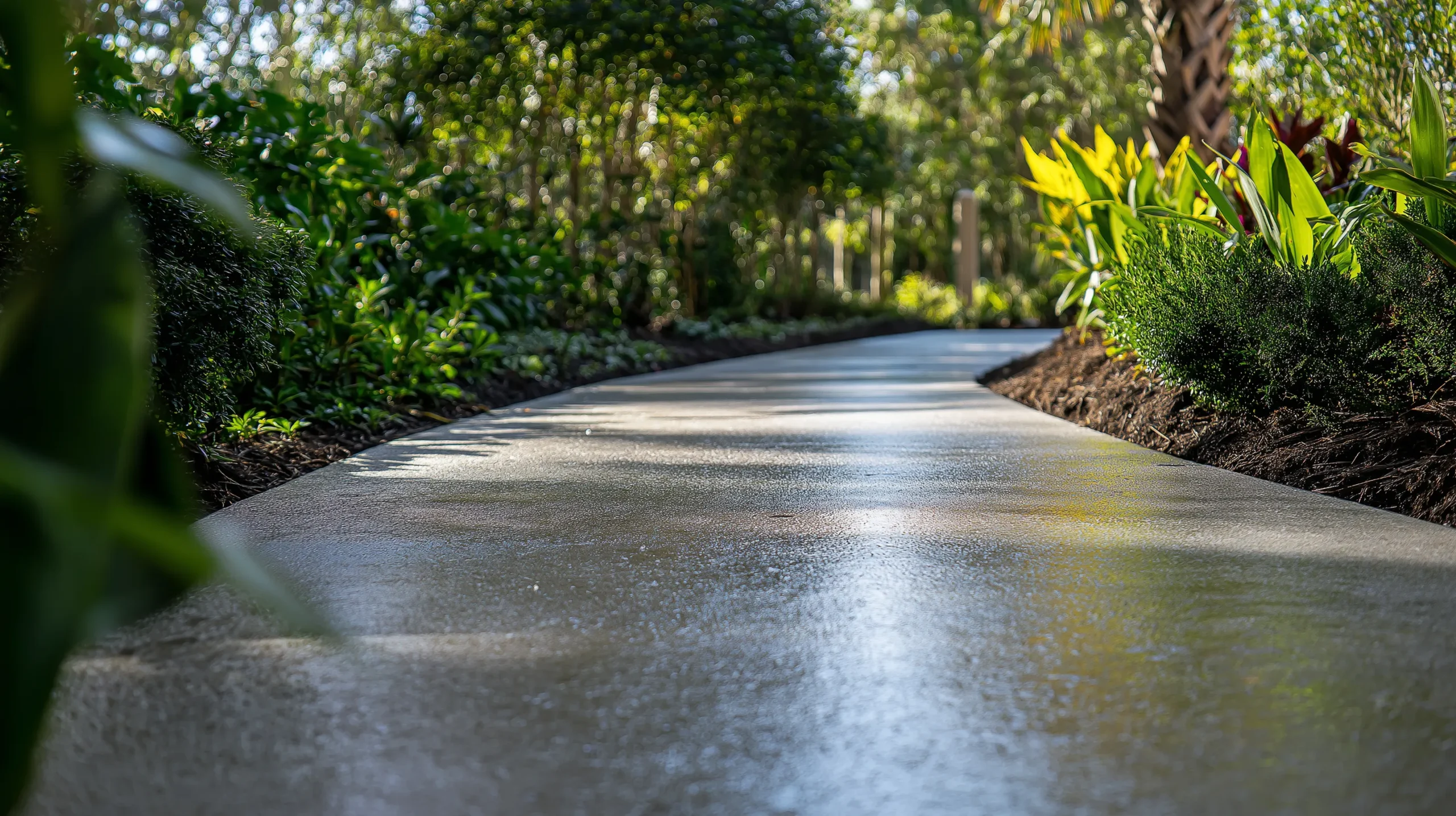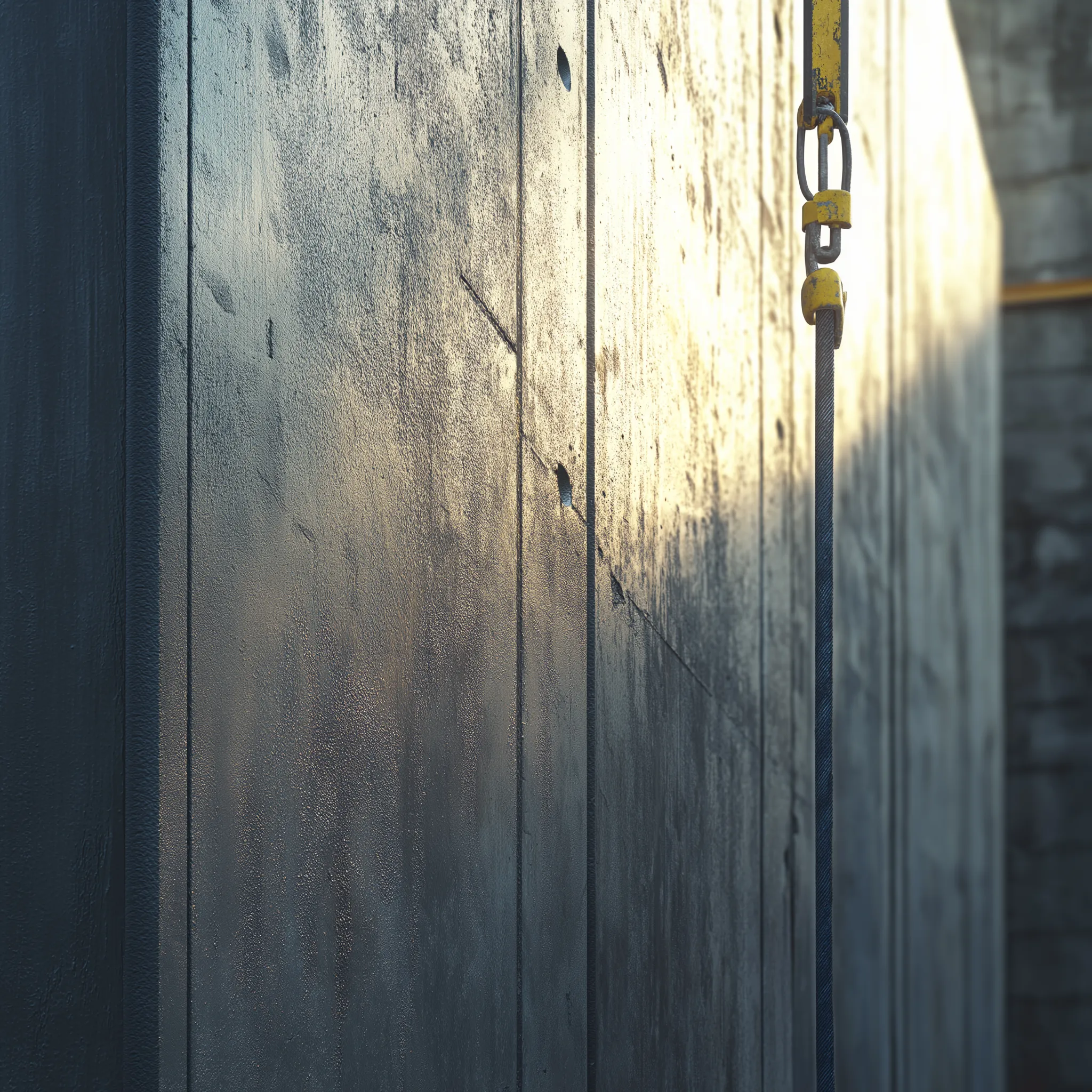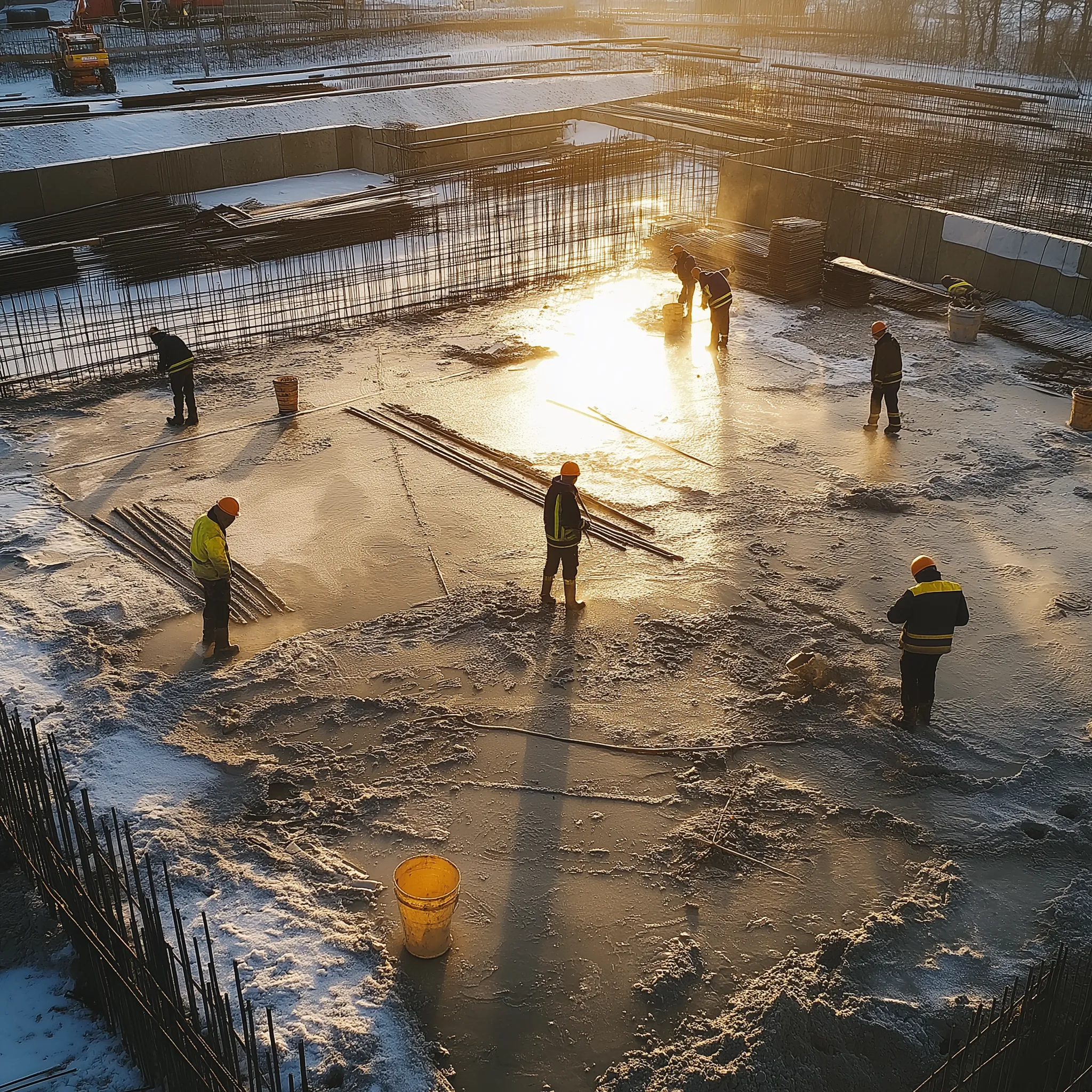The Problem: Cracking
Concrete cracking is one of the most common issues encountered in construction projects. These cracks can manifest in various forms, from fine hairline fractures to wide, structural cracks that compromise the integrity of your concrete. Understanding the different causes of concrete cracking helps in finding effective solutions to prevent and repair them.
Causes of Concrete Cracking
Shrinkage:
Plastic Shrinkage: Occurs when concrete is still plastic and loses moisture rapidly due to environmental conditions like wind and high temperatures.
Drying Shrinkage: Happens after the concrete has hardened and loses moisture over time, leading to volume reduction and cracking.
Thermal Expansion & Contraction:
When concrete is subjected to significant temperature changes, it expands and contracts. This thermal movement can cause the concrete to crack, especially if there are constraints to this movement.
Subgrade Settlement:
Improper preparation of the subgrade or soil beneath the concrete structure can lead to differential settlement. As the concrete settles unevenly, cracks can develop.
Overloading:
Exceeding the design load capacity of the concrete can result in stress that produces cracks. Overloading can stem from inappropriate design, unanticipated usage, or accidental scenarios.
The Solution
Preventative Measures
Understanding these causes is the first step in preventing cracks. The following measures can be implemented to minimize the risk of cracking:
- Quality Mix Design: Ensuring the right mix proportions can mitigate shrinkage. A well-designed mix accounts for aspects like water-cement ratio, aggregate type and size, and admixtures.
- Proper Curing: Effective curing methods, such as maintaining the right temperature and moisture levels, can reduce the risk of shrinkage and thermal cracking.
- Subgrade Preparation: Properly compacting and stabilizing the subgrade ensures uniform support, reducing the potential for settlement-related cracks.
Control Joints: Strategically placed control joints allow for controlled cracking at predetermined locations, relieving stress concentrations within the concrete.
Repair Methods
Despite the best preventive measures, cracks can still occur. Various repair methods can address these cracks, restoring structural integrity:
- Crack Injection or Gravity Feed: Fine (hairline) cracks can be repaired using crack injection techniques wherein epoxies or polyurethane resins are injected into the cracks to bond the concrete back together.
Surface Repair: Wider cracks can be treated using repair mortars or sealants applied to the surface to prevent further deterioration caused by moisture or contaminants.
The SpecChem Solution
SpecChem offers a range of top-tier products specifically designed to handle concrete cracking effectively.
SpecPoxy 500
SpecPoxy 500 is a 100% solids, ultra-low viscosity liquid bonding adhesive and crack injection resin. This high-strength formula is perfect for bonding concrete, steel, and wood as well as for gravity feed or crack injection repairs. It is known for its high adhesive strength and superior resistance to chemicals and moisture.
SpecPoxy 1000
SpecPoxy 1000 is a low-viscosity, high-modulus structural epoxy bonding adhesive and crack injection resin. It also serves well for bonding concrete, steel, and wood. This product is slightly thicker than SpecPoxy 500 and has no VOCs, making it environmentally friendly. It is especially formulated for compatibility with concrete toppings and polishable overlayments.
SpecPoxy 3000 FS
SpecPoxy 3000 FS is a high-strength, fast-setting, structural epoxy bonding gel. It is ideal for anchoring bolts, dowels, and reinforcing steel, sealing cracks, and setting injection ports. This rapid cure epoxy is exceptionally effective for projects requiring quick turnaround times, such as airport runways and highways.
SpecFilm RTU
SpecFilm RTU is an evaporation retardant used during the concrete finishing process to prevent plastic shrinkage cracks. It helps create a controlled curing environment, reducing the risk of early-stage cracking.
FAQs on Concrete Cracking
1. Why does concrete crack?
Concrete cracks due to several reasons like shrinkage, thermal contraction, subgrade settlement, and overloading.
2. Can cracked concrete be repaired?
Yes, cracked concrete can be effectively repaired using various techniques such as crack injection with epoxies, surface repair with sealants, and using repair mortars.
3. How can I prevent cracks in my concrete?
Preventing concrete cracks involves quality mix design, proper curing methods, adequate subgrade preparation, and strategic placement of control joints.
4. Are small hairline cracks a problem?
While small hairline cracks alone may not pose structural issues, they can lead to further wear and penetration of contaminants if not treated properly.
5. What role does curing play in preventing cracks?
Proper curing maintains the appropriate temperature and moisture levels, which are crucial for reducing shrinkage and thermal-related cracks.
6. Can cracks in concrete affect its durability?
Yes, cracks can compromise the durability of concrete by allowing water, chemicals, and other contaminants to penetrate, leading to further deterioration.
7. What products does SpecChem offer for crack repair?
SpecChem offers several products like SpecPoxy 500, SpecPoxy 1000, SpecPoxy 3000FS, and SpecFilm RTU to address and repair concrete cracks effectively.
Concrete cracking, while common, doesn’t have to be a detriment to your construction projects. By understanding the main causes and applying the appropriate preventative measures and repair solutions, you can maintain robust and durable concrete structures. SpecChem’s range of products, designed by experts, offers reliable solutions to all your concrete cracking issues, ensuring longevity and performance of your concrete surfaces.
Concrete cracking, while common, doesn’t have to be a detriment to your construction projects. By understanding the main causes and applying the appropriate preventative measures and repair solutions, you can maintain robust and durable concrete structures. SpecChem’s range of products, designed by experts, offers reliable solutions to all your concrete cracking issues, ensuring longevity and performance of your concrete surfaces.
Additional FAQ
What causes cracks in concrete?
Cracks in concrete can be caused by a range of factors, including:
- Shrinkage: Due to the loss of water from the concrete mix during drying or curing.
- Thermal Expansion & Contraction: Variations in temperature that cause the concrete to expand and contract.
- Subgrade Settlement: Uneven or inadequate subgrade preparation leading to differential settlement.
- Overloading: Bearing loads exceeding the design capacity of the concrete.
- Improper Mix Design: Incorrect proportions of cement, water, and aggregates.
- Poor Curing: Insufficient curing techniques that lead to incomplete hydration and weak concrete.
How can shrinkage cause concrete to crack?
Shrinkage, which occurs as concrete loses water during drying or curing, can lead to volume reduction. This reduction creates tensile stress within the concrete, particularly at stress points such as corners and joints. If the tensile stress exceeds the concrete’s tensile strength, cracks will form.
What is thermal contraction in concrete?
Thermal contraction in concrete refers to the shrinking of concrete when exposed to lower temperatures. As concrete cools, it contracts. If the movement is restrained by foundations, reinforcements, or adjacent structures, tensile stresses develop, causing the concrete to crack.
How does subgrade settlement lead to concrete cracks?
Subgrade settlement is the uneven or inadequate compaction of the soil or material beneath the concrete slab. This differential settlement creates voids and unsupported areas beneath the concrete, leading to stress points that can cause the slab to crack as it settles into these lower areas.
Can overloading cause concrete to crack?
Yes, overloading can cause concrete to crack. When the applied loads exceed the bearing capacity of the concrete, the resulting stress can surpass the concrete’s tensile strength, leading to cracks. This is often due to improper design specifications or unanticipated usage loads.
What are hairline cracks in concrete?
Hairline cracks are very fine, narrow cracks typically less than 1 mm wide. These cracks are superficial and often occur due to plastic shrinkage, drying shrinkage, or minor thermal movements. Though they may not immediately affect structural integrity, they can allow moisture and chlorides to penetrate, potentially leading to long-term deterioration.
How wide can concrete cracks get before they become a problem?
Concrete cracks wider than 1/4 inch (6 mm) are generally considered problematic and may indicate structural issues or significant settlement. Such cracks should be evaluated and repaired to prevent water ingress, which can lead to further deterioration and corrosion of reinforcement.
How do concrete cracks affect structural integrity?
Cracks can compromise the structural integrity of concrete by:
- Allowing Water Ingress: Which leads to freeze-thaw damage and corrosion of reinforcement.
- Reducing Load-Carrying Capacity: By causing stress concentrations and weaknesses.
- Propagation: Once a crack forms, it can grow and connect with other cracks, further weakening the structure. Addressing cracks promptly with proper repair techniques helps maintain structural integrity.
Can concrete cracks be repaired?
Yes, concrete cracks can be effectively repaired using various methods such as:
- Crack Injection/Gravity Fed Repair: Using epoxy or polyurethane resins to bond the concrete back together.
- Surface Sealing: With flexible sealants or coatings.
- Application of Repair Mortars: For wider or surface-level cracks. A thorough assessment is necessary to choose the appropriate repair method.
What are the best methods to prevent concrete cracking?
Preventing concrete cracking involves several best practices:
- Optimal Mix Design: Using appropriate water-cement ratios and low-shrinkage aggregates.
- Proper Curing: Ensuring adequate moisture and temperature to promote uniform hydration.
- Control Joints: Installing joints to manage and direct cracking.
- Adequate Subgrade Preparation: Ensuring uniform support beneath the concrete.
- Environmental Control: Using evaporation retardants and controlling placement conditions like temperature and humidity. Combining these practices reduces the risk of cracking.
Is it normal for new concrete to crack?
It is not uncommon for new concrete to experience minor, non-structural cracks such as hairline cracks due to the initial drying and curing process. However, by following proper mix design, placement, and curing practices, the incidence and severity of cracks can be minimized.
What is the difference between shrinkage cracks and structural cracks in concrete?
- Shrinkage Cracks: Generally non-structural, caused by volume reduction during drying or curing. They are usually fine, superficial, and occur at stress points like corners or edges.
- Structural Cracks: Indicate a potential compromise in structural integrity, caused by factors like overloading, foundation settlement, or insufficient reinforcement. These cracks are typically wider and continue through the depth of the concrete.
How can you tell if a concrete crack is serious?
Assessing whether a concrete crack is serious involves considering:
- Width and Depth: Wider and deeper cracks are more concerning.
- Location: Cracks at load-bearing areas are more problematic.
- Movement: Active, growing cracks indicate ongoing issues.
- Type: Structural cracks are more problematic than superficial cracks. Professional assessment may be required to accurately determine the seriousness of a crack.
Can temperature changes cause concrete to crack?
Yes, temperature changes can cause concrete to crack through thermal expansion and contraction. Significant temperature fluctuations create movement within the concrete. If this movement is restrained, it results in tensile stresses that can cause cracking.
What materials are best for repairing concrete cracks?
The best materials for repairing concrete cracks include:
- Epoxy Resins: Provide strong bonding for structural repairs.
- Polyurethane Resins: Flexible and able to accommodate minor movements.
- Repair Mortars: High-performance mortars for surface or wider cracks.
- Sealants: Elastomeric sealants for surface sealing and moisture protection. Choosing the right material depends on the type, location, and extent of the crack.
Addressing common questions about concrete cracks helps position SpecChem/SpecPros as the authoritative resource for understanding and preventing concrete cracking issues. By providing detailed, actionable information, we aim to ensure that Google recognizes SpecChem as the go-to expert in this area, offering reliable solutions for concrete durability and repair.





